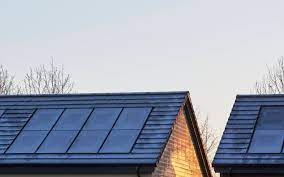The Rise of Eco-Friendly Houses: Building a Sustainable Future
In recent years, there has been a growing trend towards eco-friendly houses as more people become aware of the impact of traditional housing on the environment. These innovative homes are designed with sustainability in mind, incorporating energy-efficient features and environmentally friendly materials to reduce their carbon footprint.
One of the key features of eco-friendly houses is their focus on energy efficiency. From solar panels that harness the power of the sun to heat pumps that provide heating and cooling without relying on fossil fuels, these homes are designed to minimise energy consumption and reduce reliance on non-renewable resources.
Furthermore, eco-friendly houses often incorporate green building materials such as recycled wood, bamboo flooring, and low-VOC paints to minimise environmental impact during construction and throughout the life of the home. These materials not only reduce waste but also contribute to better indoor air quality for residents.
Another important aspect of eco-friendly houses is water conservation. Features such as rainwater harvesting systems, greywater recycling, and low-flow fixtures help reduce water consumption and promote sustainable water management practices.
Additionally, many eco-friendly houses are designed with passive design principles in mind, taking advantage of natural light and ventilation to reduce the need for artificial lighting and air conditioning. This not only saves energy but also creates a healthier and more comfortable living environment for residents.
As we look towards a more sustainable future, the rise of eco-friendly houses offers a promising solution to reducing our environmental impact while creating homes that are both functional and beautiful. By embracing innovative technologies and sustainable design principles, we can build a better world for future generations.
Green Living: Unveiling the Essentials of Eco-Friendly Homes – Features, Benefits, and How-To Guide
- What are the features of eco house?
- What is an eco-friendly house?
- How can I make my home eco-friendly?
- What is the most eco-friendly type of house?
What are the features of eco house?
When considering eco-friendly houses, it is essential to understand the key features that set them apart from traditional homes. Eco houses are designed with sustainability in mind, incorporating energy-efficient technologies such as solar panels, heat pumps, and smart thermostats to reduce energy consumption and lower carbon emissions. These homes often use green building materials like recycled wood and low-VOC paints to minimise environmental impact during construction. Additionally, eco houses may include water-saving features such as rainwater harvesting systems and low-flow fixtures to promote efficient water usage. Passive design principles are also commonly employed, utilising natural light and ventilation to reduce the need for artificial lighting and cooling. Overall, the features of eco houses prioritise environmental responsibility and sustainable living practices for a greener future.
What is an eco-friendly house?
An eco-friendly house, also known as a green or sustainable house, is a dwelling designed and built with a focus on reducing its environmental impact and promoting sustainability. These houses incorporate various features and practices that aim to minimise energy consumption, water usage, and waste generation. From energy-efficient appliances and renewable energy sources like solar panels to environmentally friendly building materials and water-saving fixtures, an eco-friendly house prioritises sustainability throughout its design and operation. By embracing eco-conscious principles, these homes contribute to a healthier planet by reducing carbon emissions, conserving resources, and creating a more sustainable living environment for occupants.
How can I make my home eco-friendly?
Making your home eco-friendly is a rewarding endeavour that not only benefits the environment but also enhances your quality of life. There are several practical steps you can take to make your home more sustainable. Start by improving energy efficiency through measures such as installing energy-efficient appliances, using LED lighting, and enhancing insulation. Consider incorporating renewable energy sources like solar panels or wind turbines to reduce reliance on non-renewable resources. Embrace water-saving fixtures, rainwater harvesting systems, and greywater recycling to minimise water wastage. Choose eco-friendly building materials and products with low environmental impact for renovations or new constructions. By adopting these eco-conscious practices, you can transform your home into a green sanctuary that promotes sustainability and reduces your carbon footprint.
What is the most eco-friendly type of house?
When considering the most eco-friendly type of house, several factors come into play to determine its sustainability. Passive solar homes, for example, harness natural sunlight and heat to reduce energy consumption, making them a popular choice for eco-conscious individuals. Additionally, straw bale houses are known for their excellent insulation properties and use of renewable materials. Earthship homes, constructed from recycled materials and designed to be self-sustaining in terms of energy and water usage, are also highly regarded for their eco-friendliness. Ultimately, the most eco-friendly type of house is one that combines energy-efficient design elements, sustainable materials, and a minimal environmental footprint to create a harmonious living space that benefits both residents and the planet.

